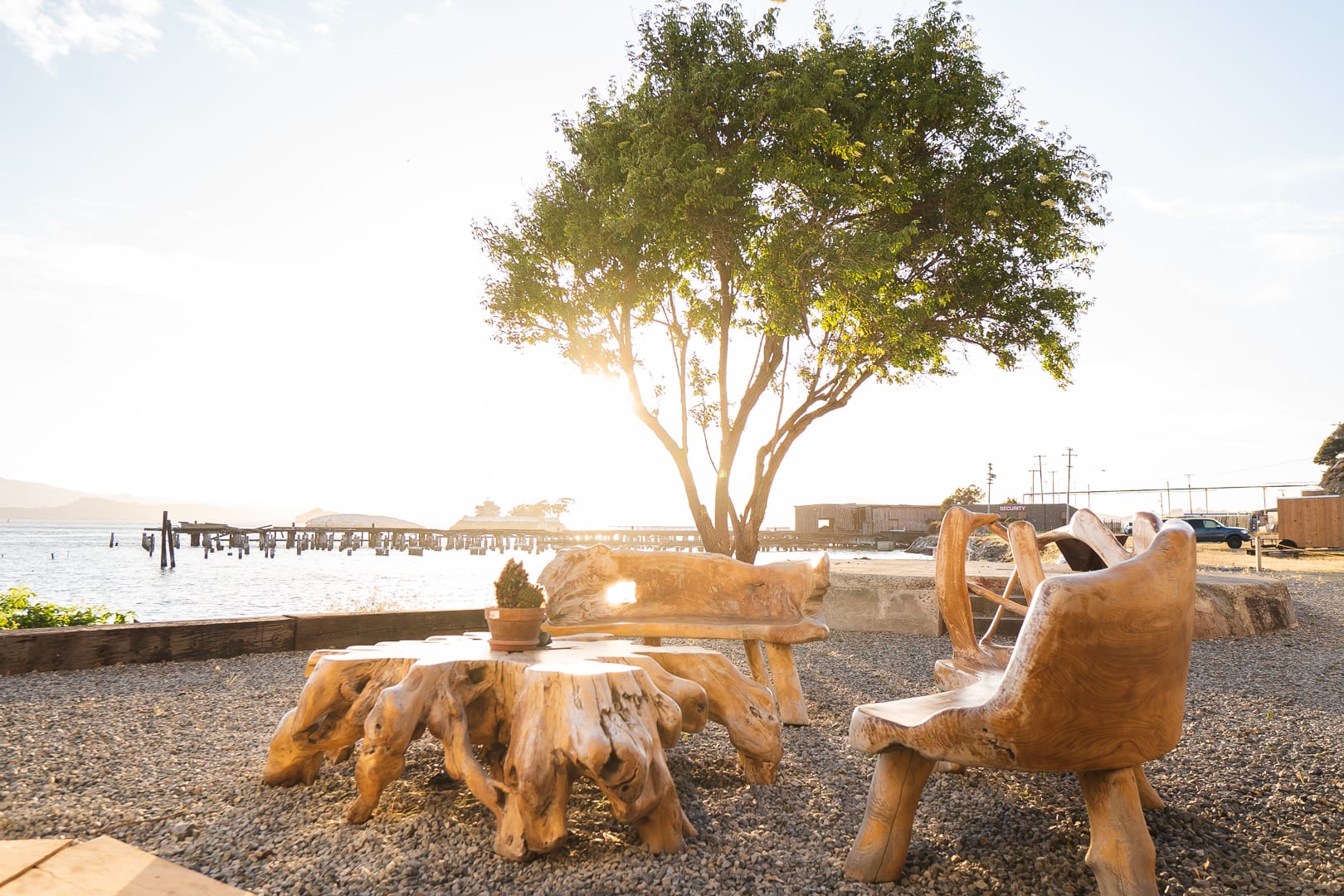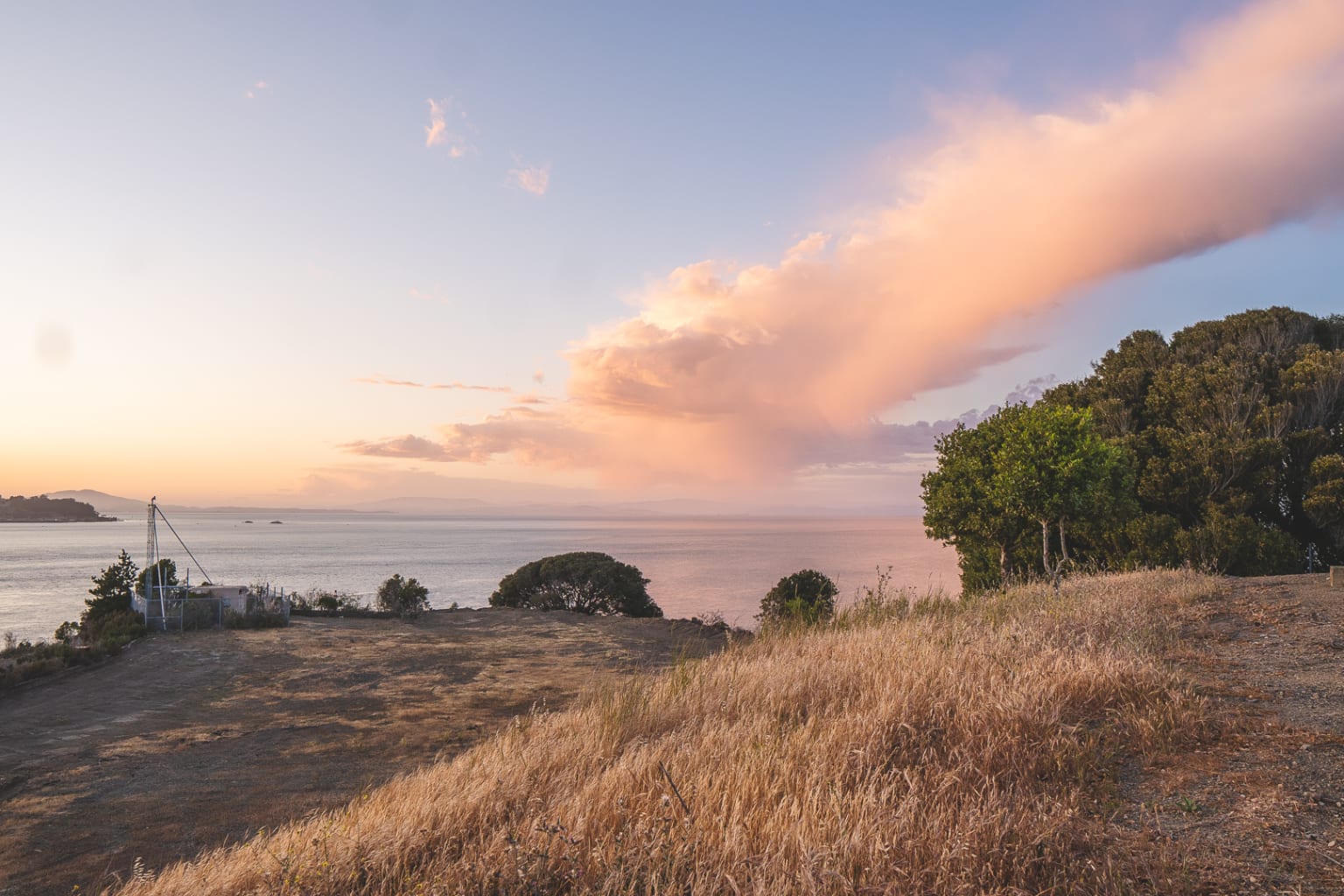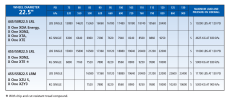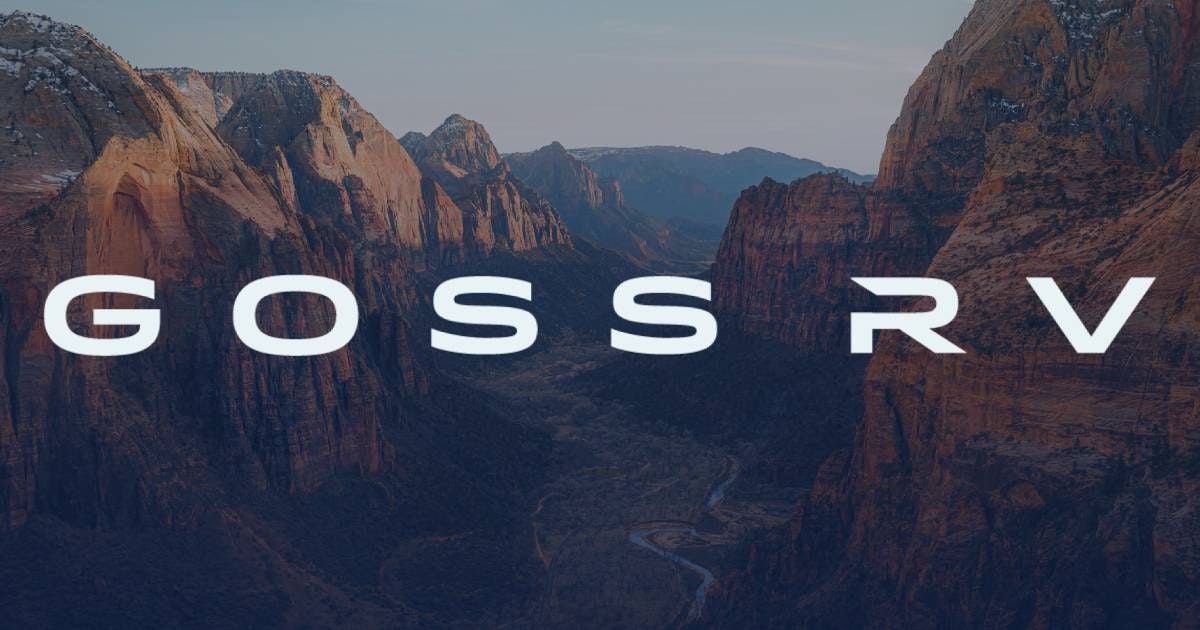Ted
The pilot formerly known as Twin Engine Ted
- Joined
- Oct 9, 2007
- Messages
- 29,889
- Display Name
Display name:
iFlyNothing
We are now back from our longest trip in the RV to date - 4 weeks and around 4500 miles. It would've been 5 weeks and 5k miles if we'd done the full trip we had planned, but my broken wrist (I'll make another post on that in the adventure bike thread).
I threw in the towel on the Land Rover engine on the 4th of July, and so I went out and bought an enclosed trailer which allowed us to tow the GSA as well as the Alfa in it. We'd been considering this purchase anyway so it just gave us the motivation we needed to get it done.
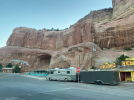
We started off going to Carlsbad Caverns to see the bats fly out of the cave at sunset - a truly amazing spectacle and worth seeing. We boondocked and were the only ones crazy enough to do that in the campground given the >100F temps:
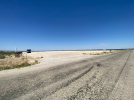
We stayed here once before in March and it had been fairly crowded. We were surprised to see it completely deserted, a testament to our preparedness or poor risk assessment, take your pick.
After that we went to Las Vegas to get a tour of the Hoover Dam. Both of those stops were really on the way to Laguna Seca raceway where we went for a vintage motorcycle racing weekend (watching, not participating). Through a stroke of good luck we got the best camping spot (in my opinion):
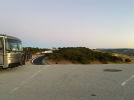
Right at the corkscrew.

We ended up spending a week at the raceway due to my broken wrist, and found it a wonderful place to camp in the area.
From there, we did a day trip to Pinnacles National Park, then went to Sequoia and Kings Canyon National parks and stayed there for close to a week. There's a lot to see there and my wife and kids got to do white water rafting (I had to stay at the RV due to my broken wrist and recent surgery). The trees are very impressive.

We then headed to San Francisco for several days, and then headed home - the 3 day drive. While in San Francisco we attempted to deposit our son at Alcatraz but they wouldn't keep him. But it was a neat place to visit, somewhere I'd wanted to see my whole life. And we saw @Everskyward !
The campground in SF required the tightest U-turn I've ever made (due to the combination of length with the trailer and width of the passage Yes, I made it. This ended up being the only place the entire trip we had to unhook the trailer and hook back up. That was a pain, and made me glad we didn't have to do it anywhere else.
All in all, the RV and all the work I did to it performed well with nothing much for hiccups. The ACs performed beautifully and the generator ran for 6 days straight at the start of the trip, 3 days straight at the end, and while driving for much of the middle to power the rooftop ACs. It's quieter without a doubt.
After a week in 100+F weather it was amazing how heat soaked the entire bus got. The cold water coming out of the tap was warm enough that you kept it on full cold for a shower. That radiant heat challenged the AC after several days, but it still remained comfortable inside. Best of all, the driver area was much more comfortable while driving. Last summer I had to wear my cooling vest to stay comfortable through much of it. This summer, I never felt the need. The quietness at night proved very nice, I was no longer woken up by the compressors kicking on and off.
Towing the trailer was ultimately very nice. Having the Alfa proved a real asset this trip as we did a lot of car driving, and having the new more reliable vehicle with good air conditioning was really a benefit in this case. So long as you don't have to unhook the trailer, it was easy. And being able to bring the motorcycle along was very nice as well. The options provided by it were great.
The water injection worked, but it wasn't a slam dunk. For one, -20F washer fluid with methanol isn't available everywhere - it's outright banned for sale in some states. I ended up using straight water much of the time. It needed a significantly higher amount of water/flow than I'd hoped to keep the intake air temps in check (as you'd expect, water/meth worked better there than pure water). But, it absolutely worked. Temps were lower and it helped overall cooling and power. With water/meth mix the throttle response improved/turbo lag decreased which was a nice bonus. I felt like the intake had to get cleaned some as I was driving. The engine sounded healthier after some miles on it with the setup.
The only mechanical issue I had was one transmission cooler starting to leak on the way from Vegas to Laguna Seca. Because I have two coolers in parallel I simply bypassed the one. This was marginal, but it ultimately worked. The Allison seems to make heat mostly based on revs rather than horsepower, so ironically the extended downhills under engine braking are where I had the most heat issues. A few times I had to let it cool off, but this just shows my initial cooler sizing was correct. I'll get another one coming and replace it.
My cooling worked but it was, again, marginal. We were towing around 9k lbs instead of our normal 4-5k and that added up. It was also >100 through a lot of it, in mountains, basically the hardest test you could do. I only once kicked the Alfa out of the trailer and had my wife drive it, as we were approaching Las Vegas and the 110F temps were just too much for it to handle climbing hills from the Hoover Dam. Generally being cooling limited to 60 MPH (55-65 in the flat ground) got old compared to the normal 70 we were used to. This was especially true on the long drive home. But again, we were pushing the thing very hard, so this really isn't to be unexpected. It was marginal from the factory and I've been thinking about ways it could be improved. I've got a number of ideas of varying cost/effort/effectiveness.
Some of the other improvements really paid off. The added insulation above the generator did a fantastic job of cooling things going down the road. The new TV and sound bar/subwoofer in the bedroom made watching our favorite show (and movies) much nicer. We didn't end up needing the extra water capacity but it gave us good peace of mind while boondocking (ultimately this trip was very light on boondocking compared to normal).
It's been almost exactly 3 years since we bought our bus, and almost exactly 40k miles that we've put on it all over the country, with a total of 124k on the clock. This was the biggest, hardest, longest trip we've done yet and none of us wanted it to end, although real life dictated it was time to get home. Every single thing we've done has improved our quality of life on the road. We've also used this bus hard with that many miles and 3 kids, and some of the wear and tear is noticeable, as you'd expect.
We did discuss on the drive home whether we want to continue to work on this bus further or start thinking about an upgrade. There are a few things that are challenges on this bus that have to do with its inherent core build. Sleeping for the kids will continue to get harder - really the need bunks and there's not a good way we've figured to modify that. The chase lounge our son sleeps on he's rapidly outgrowing. Also they're complaining about mattress comfort, something that I think is valid - their current setup I find uncomfortable if I lie down on.
I love the 3126B, but at 7.2L, this bus needs more engine. A C9 would be ideal but that also requires an engine swap. It also needs more cooling. Rear radiator designs aren't good and get worse with extra heat. I could improve the cooling easier and cheaper than an engine swap, but of course an engine swap would also require more cooling.
The water tank capacity is lacking. I added an extra 50 gallons of fresh, but this doesn't help us with the grey tank, which is another issue, especially as we boondock.
The ride still leaves a lot to be desired, mostly from the front.
Really, the towing capacity is too low for how we want to use it.
With enough effort everything could be fixed, and obviously sticking with the bus we have lets us continue to benefit from the effort we put in. But with the market starting to noticeably tank and us always eyeing a proper bus (Prevost being the real top end) it does create the question of whether we want to find a 45' bus and work on that. A properly sized engine with Jakes, a better suspension, more interior space, more towing capacity. For now it's nothing more than a consideration. I've got some minor repairs I need to do on the bus, we'll be taking it to 6Y9, and before any consideration of a new giant project like that I'm going to work on getting the Cobra finished up and at least the carb rebuilt on the RX7 to try to get that running right. Plus some house projects and other overdue things.
Oh yeah, and get this wrist healed so I can actually turn wrenches again.
I threw in the towel on the Land Rover engine on the 4th of July, and so I went out and bought an enclosed trailer which allowed us to tow the GSA as well as the Alfa in it. We'd been considering this purchase anyway so it just gave us the motivation we needed to get it done.

We started off going to Carlsbad Caverns to see the bats fly out of the cave at sunset - a truly amazing spectacle and worth seeing. We boondocked and were the only ones crazy enough to do that in the campground given the >100F temps:

We stayed here once before in March and it had been fairly crowded. We were surprised to see it completely deserted, a testament to our preparedness or poor risk assessment, take your pick.
After that we went to Las Vegas to get a tour of the Hoover Dam. Both of those stops were really on the way to Laguna Seca raceway where we went for a vintage motorcycle racing weekend (watching, not participating). Through a stroke of good luck we got the best camping spot (in my opinion):

Right at the corkscrew.

We ended up spending a week at the raceway due to my broken wrist, and found it a wonderful place to camp in the area.
From there, we did a day trip to Pinnacles National Park, then went to Sequoia and Kings Canyon National parks and stayed there for close to a week. There's a lot to see there and my wife and kids got to do white water rafting (I had to stay at the RV due to my broken wrist and recent surgery). The trees are very impressive.

We then headed to San Francisco for several days, and then headed home - the 3 day drive. While in San Francisco we attempted to deposit our son at Alcatraz but they wouldn't keep him. But it was a neat place to visit, somewhere I'd wanted to see my whole life. And we saw @Everskyward !
The campground in SF required the tightest U-turn I've ever made (due to the combination of length with the trailer and width of the passage Yes, I made it. This ended up being the only place the entire trip we had to unhook the trailer and hook back up. That was a pain, and made me glad we didn't have to do it anywhere else.
All in all, the RV and all the work I did to it performed well with nothing much for hiccups. The ACs performed beautifully and the generator ran for 6 days straight at the start of the trip, 3 days straight at the end, and while driving for much of the middle to power the rooftop ACs. It's quieter without a doubt.
After a week in 100+F weather it was amazing how heat soaked the entire bus got. The cold water coming out of the tap was warm enough that you kept it on full cold for a shower. That radiant heat challenged the AC after several days, but it still remained comfortable inside. Best of all, the driver area was much more comfortable while driving. Last summer I had to wear my cooling vest to stay comfortable through much of it. This summer, I never felt the need. The quietness at night proved very nice, I was no longer woken up by the compressors kicking on and off.
Towing the trailer was ultimately very nice. Having the Alfa proved a real asset this trip as we did a lot of car driving, and having the new more reliable vehicle with good air conditioning was really a benefit in this case. So long as you don't have to unhook the trailer, it was easy. And being able to bring the motorcycle along was very nice as well. The options provided by it were great.
The water injection worked, but it wasn't a slam dunk. For one, -20F washer fluid with methanol isn't available everywhere - it's outright banned for sale in some states. I ended up using straight water much of the time. It needed a significantly higher amount of water/flow than I'd hoped to keep the intake air temps in check (as you'd expect, water/meth worked better there than pure water). But, it absolutely worked. Temps were lower and it helped overall cooling and power. With water/meth mix the throttle response improved/turbo lag decreased which was a nice bonus. I felt like the intake had to get cleaned some as I was driving. The engine sounded healthier after some miles on it with the setup.
The only mechanical issue I had was one transmission cooler starting to leak on the way from Vegas to Laguna Seca. Because I have two coolers in parallel I simply bypassed the one. This was marginal, but it ultimately worked. The Allison seems to make heat mostly based on revs rather than horsepower, so ironically the extended downhills under engine braking are where I had the most heat issues. A few times I had to let it cool off, but this just shows my initial cooler sizing was correct. I'll get another one coming and replace it.
My cooling worked but it was, again, marginal. We were towing around 9k lbs instead of our normal 4-5k and that added up. It was also >100 through a lot of it, in mountains, basically the hardest test you could do. I only once kicked the Alfa out of the trailer and had my wife drive it, as we were approaching Las Vegas and the 110F temps were just too much for it to handle climbing hills from the Hoover Dam. Generally being cooling limited to 60 MPH (55-65 in the flat ground) got old compared to the normal 70 we were used to. This was especially true on the long drive home. But again, we were pushing the thing very hard, so this really isn't to be unexpected. It was marginal from the factory and I've been thinking about ways it could be improved. I've got a number of ideas of varying cost/effort/effectiveness.
Some of the other improvements really paid off. The added insulation above the generator did a fantastic job of cooling things going down the road. The new TV and sound bar/subwoofer in the bedroom made watching our favorite show (and movies) much nicer. We didn't end up needing the extra water capacity but it gave us good peace of mind while boondocking (ultimately this trip was very light on boondocking compared to normal).
It's been almost exactly 3 years since we bought our bus, and almost exactly 40k miles that we've put on it all over the country, with a total of 124k on the clock. This was the biggest, hardest, longest trip we've done yet and none of us wanted it to end, although real life dictated it was time to get home. Every single thing we've done has improved our quality of life on the road. We've also used this bus hard with that many miles and 3 kids, and some of the wear and tear is noticeable, as you'd expect.
We did discuss on the drive home whether we want to continue to work on this bus further or start thinking about an upgrade. There are a few things that are challenges on this bus that have to do with its inherent core build. Sleeping for the kids will continue to get harder - really the need bunks and there's not a good way we've figured to modify that. The chase lounge our son sleeps on he's rapidly outgrowing. Also they're complaining about mattress comfort, something that I think is valid - their current setup I find uncomfortable if I lie down on.
I love the 3126B, but at 7.2L, this bus needs more engine. A C9 would be ideal but that also requires an engine swap. It also needs more cooling. Rear radiator designs aren't good and get worse with extra heat. I could improve the cooling easier and cheaper than an engine swap, but of course an engine swap would also require more cooling.
The water tank capacity is lacking. I added an extra 50 gallons of fresh, but this doesn't help us with the grey tank, which is another issue, especially as we boondock.
The ride still leaves a lot to be desired, mostly from the front.
Really, the towing capacity is too low for how we want to use it.
With enough effort everything could be fixed, and obviously sticking with the bus we have lets us continue to benefit from the effort we put in. But with the market starting to noticeably tank and us always eyeing a proper bus (Prevost being the real top end) it does create the question of whether we want to find a 45' bus and work on that. A properly sized engine with Jakes, a better suspension, more interior space, more towing capacity. For now it's nothing more than a consideration. I've got some minor repairs I need to do on the bus, we'll be taking it to 6Y9, and before any consideration of a new giant project like that I'm going to work on getting the Cobra finished up and at least the carb rebuilt on the RX7 to try to get that running right. Plus some house projects and other overdue things.
Oh yeah, and get this wrist healed so I can actually turn wrenches again.


